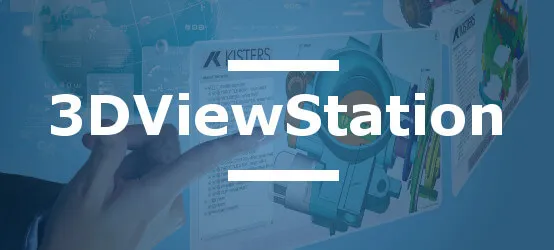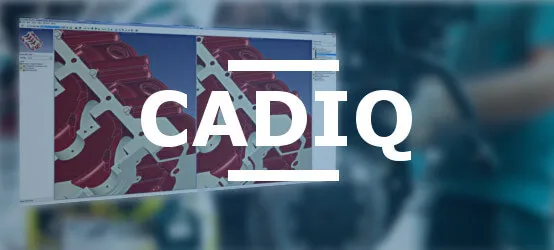Model-Based Definition (MBD) is an approach that documents a product using exclusively enriched 3D data. This system combines 3D geometry, Product Manufacturing Information (PMI), and metadata to create a single source of complete information. MBD relies on 3D annotations, including dimensions, tolerances, roughness, and other attributes essential to manufacturing. Additionally, 2D documents such as lists, diagrams, or matrices can be included in a Technical Data Package (TDP), which centralizes all the necessary information to fully define a product and its requirements.
The Advantages of MBD and MBE
The MBD approach represents a true revolution in the CAD/CAM/CAE field. Annotated 3D models and 3D TDPs are gradually replacing 2D drawings as the sole source of all design information. When an MBD approach is deployed from the early stages of the product lifecycle and reused throughout the company and its supply chain, it enables faster, more consistent, and cost-effective product development, from design to disposal.
This transformation leads to the creation of an environment called Model-Based Enterprise (MBE). In an MBE environment, MBD becomes the design reference or product authority. Transitioning from 2D drawings to a 3D model with annotations reduces errors, rework, and the costs associated with creating physical documents. Collaboration between stakeholders is optimized, and data is shared more efficiently.
Challenges in Transitioning to MBD
While the implementation of MBD is promising, it involves many challenges. Companies must not only migrate their legacy 2D/3D data but also ensure the reuse of MBD data throughout the supply chain. This requires rigorous data management and the adoption of new standards for creating and sharing 3D annotations. Technical Data Packages (TDPs) must be compatible with all CAD systems used to ensure seamless interoperability with partners and suppliers, regardless of the platforms they use.
The Importance of Data Quality in MBD
It is essential to ensure data quality in 3D models and TDPs. The goal is for all model users to share the same information unambiguously, enabling smooth and error-free collaboration. If the original design intent is faithfully maintained within the 3D model, the risk of downstream issues, especially in production, is minimized. This also reduces the need for exchanges of questions and clarifications between teams.
CAD Interoperability Solutions from CAD Interop
To facilitate this transition to an MBD environment, CAD Interop offers a wide range of interoperability solutions. These solutions help companies migrate their legacy 2D/3D data, ensure MBD data compatibility across various CAD systems, and maintain high-quality data transfer for design information.
- 3DViewStation: a powerful tool for MBD model visualization, allowing for in-depth analysis and easy reading of PMI directly within 3D models, with multi-CAD format compatibility.
- CADIQ: a dedicated solution for MBD model validation that ensures critical design and manufacturing information (PMI) is accurately represented and meets requirements, while detecting discrepancies between models.
- Proficiency: a CAD conversion solution capable of preserving the construction history, including PMI, to ensure smooth and complete MBD model migration between different CAD systems while maintaining essential design information.
CAD Interop identifies and resolves issues related to MBD data migration and reuse throughout the product lifecycle, ensuring seamless data sharing with partners and suppliers.
Concrete Benefits of MBD with CAD Interop
Adopting the MBD approach with the solutions distributed by CAD Interop offers several concrete benefits for companies:
- Improved communication: All critical information is centralized in a single 3D model, facilitating collaboration between engineers, designers, technicians, and project managers.
- Reduced cycle times: Eliminating redundant steps and minimizing errors accelerates product development, from design to production.
- Cost optimization: The removal of paper documents and the reduction of production errors help reduce costs related to rework and physical archiving.
- Management of large data sets: CAD Interop’s solutions efficiently handle large 3D datasets, ensuring smooth manipulation of complex models without performance loss.
A Successful Digital Transformation
The transition to an MBD environment represents a major evolution for companies, offering tangible benefits in terms of productivity, efficiency, and cost reduction. However, this transition is not without challenges, and companies must ensure rigorous data management and interoperable compatibility across all their systems. Thanks to CAD Interop's interoperability solutions, this transformation becomes an opportunity for continuous improvement, enabling companies to remain competitive and optimize their processes throughout the product lifecycle.




